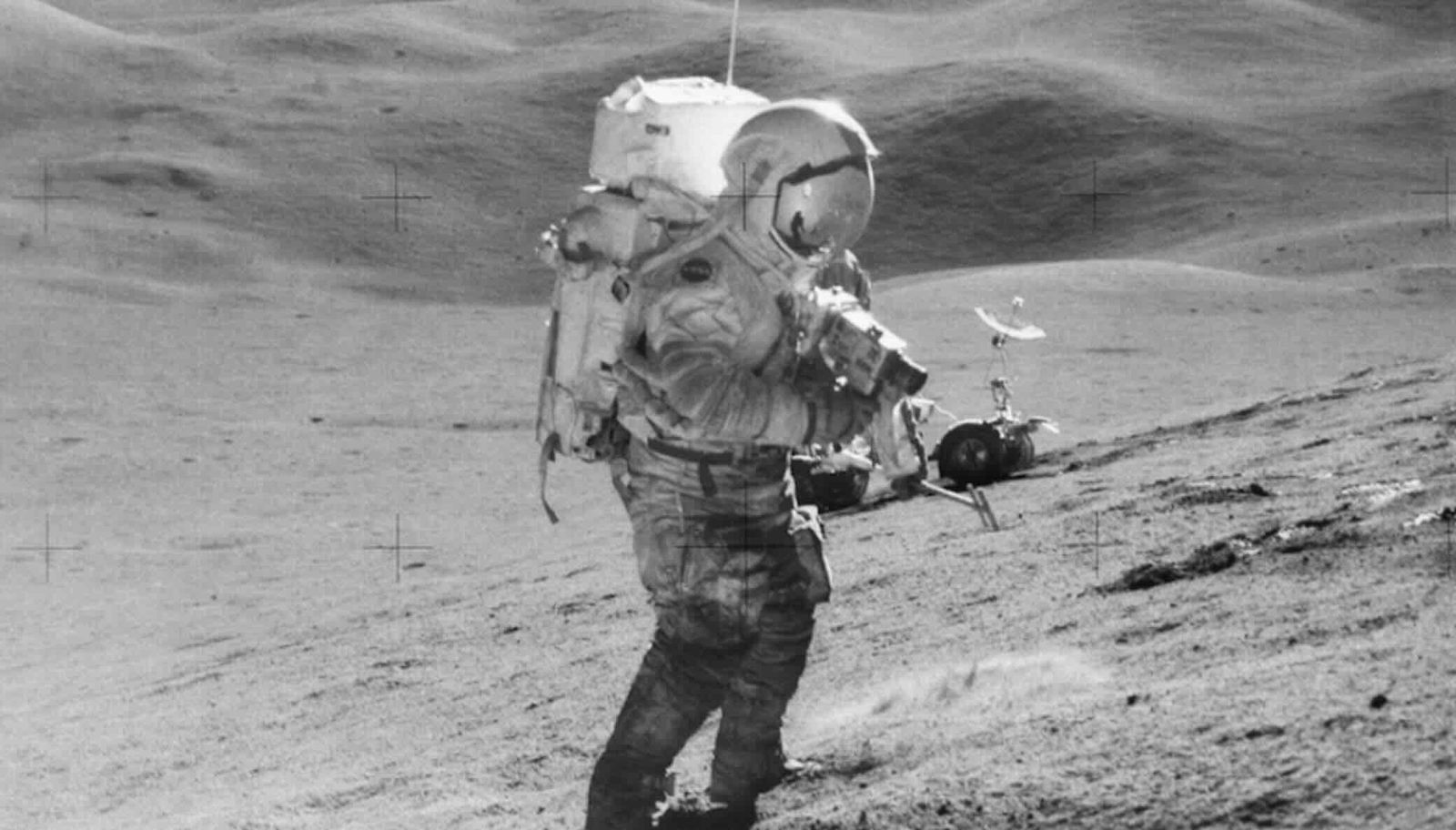During the Apollo 15 lunar mission in 1971, Commander astronaut David Scott dropped both a 1.32-kg geological hammer made of aluminum and a 0.03-kg falcon feather from a height of about 1.6 meters onto the lunar regolith. The two objects hit the ground at the same time. The experiment validated the equivalence principle, stating that gravity acts on all test objects in the same way, irrespective of their mass or composition.
This demonstration does not work so well on Earth. The falcon feather would have been slowed down by friction on air as a result of its large surface area per unit mass. Similarly, droplets of rain are slowed down by air and reach a terminal speed of several meters per second, with a magnitude proportional to the square root of their size. The friction force – which is proportional to area times velocity squared, balances gravity – which is proportional to mass. The gravitational acceleration on the surface of the Moon is a small fraction of 16.6% relative to that on Earth, but how much more rarefied is the atmosphere of the Moon?
There are about a fifth of a million atoms per cubic centimeter in the lunar atmosphere, a quarter of a quadrillion times less than the number density of molecules in Earth’s atmosphere. Before my morning jog today, I calculated that friction in the lunar atmosphere must have slowed down slightly the falcon feather so that it actually hit the lunar regolith a third of a femtosecond after the hammer. If David Scott had advanced scientific instrumentation at hand, he could have measured this tiny delay.
The total mass of the lunar atmosphere is about 25 tons. It is composed primarily of helium, neon, molecular hydrogen, and argon, with minor contributions from methane, ammonia, and carbon dioxide.
Because of the Moon’s low gravity, light molecules or atoms such as hydrogen and helium receive sufficient energy from solar heating to escape in just a few hours. Heavier atoms take longer to escape but are eventually ionized by the Sun’s ultraviolet radiation, after which they are carried away from the Moon by the solar wind. The high rate of escape from the lunar atmosphere implies that there must be a continuous source of atoms and molecules to maintain even a tenuous atmosphere.
What is the source of the lunar atmosphere? A new paper in Science magazine suggests that over long timescales, impact by micrometeoroids is the primary source of fresh atoms and molecules in the lunar atmosphere. This conclusion was based on high-precision isotope analysis of potassium and rubidium in lunar soils collected by the Apollo missions. The study tested 10 samples of lunar soil taken from different locations on the Moon. The results implied that the lunar atmosphere is replenished mostly by micrometeoroid impacts, whereas weathering by the solar wind contributes less than 30% to the atmospheric supply.
Small rocky fragments in the form of solar system micrometeoroids impact the Moon at a characteristic speed of several tens of kilometers per second, comparable to the velocity of the Earth-Moon system around the Sun. This is an order of magnitude larger than the escape speed of 2.4 kilometers per second from the lunar surface. As a result, the atoms released from the lunar surface by the steady meteoroid bombardments create a cloud of debris in the form of an atmosphere around the Moon.
The mass flux carried by micrometeoroids and cosmic dust deposits of order 28 tons per day on Earth. The surface area of the Moon is 7.4% that of Earth, suggesting that the lunar surface receives about 2 tons of material per day. Given that half of the impact speed squared is a hundred times above the gravitational binding energy per unit mass (half of the escape speed squared) from the lunar surface, the abundant input of kinetic energy by the infalling micrometeoroids and dust can easily maintain a steady lunar atmospheric mass of 25 tons below the escape speed.
One of the main limitations of astronomical observations from Earth is atmospheric opacity and infrared glow. Atmospheric molecules, atoms, and ions scatter and absorb light, blocking ultraviolet and X-ray radiation. Because of the dilute lunar atmosphere and lack of light pollution, the Moon offers a much better platform for astronomical observatories.
The lunar benefits extend to gravitational wave observatories. The lunar atmosphere is a million times more dilute than the best vacuum achieved in the LIGO-Virgo-KAGRA vacuum systems, and the lunar seismic noise is lower than on Earth. Recognizing these benefits, I proposed in a 2021 paper with Karan Jani from Vanderbilt University to establish a lunar gravitational observatory. Our calculations suggested that such an observatory can detect astrophysical black holes of all masses out to when the first stars formed. By now, our proposal has materialized into an international collaboration called the Laser Interferometer Lunar Antenna (LILA), which 13 organizations support.
The lunar atmosphere might change once humans settle on the Moon. In particular, when NASA’s Artemis program to establish a sustainable human base on the Moon comes to fruition, the heavy machinery employed in lunar construction sites will likely increase the abundance of atoms, molecules, and dust in the lunar atmosphere.
Here’s hoping that within constructed habitats on the Moon, it would be possible to breathe fresh air with the familiar atmospheric pressure and composition of 78.08% molecular nitrogen and 20.95% molecular oxygen.
Avi Loeb is the head of the Galileo Project, founding director of Harvard University’s – Black Hole Initiative, director of the Institute for Theory and Computation at the Harvard-Smithsonian Center for Astrophysics, and the former chair of the astronomy department at Harvard University (2011-2020). He is a former member of the President’s Council of Advisors on Science and Technology and a former chair of the Board on Physics and Astronomy of the National Academies. He is the bestselling author of “Extraterrestrial: The First Sign of Intelligent Life Beyond Earth” and a co-author of the textbook “Life in the Cosmos”, both published in 2021. His new book, titled “Interstellar”, was published in August 2023.

